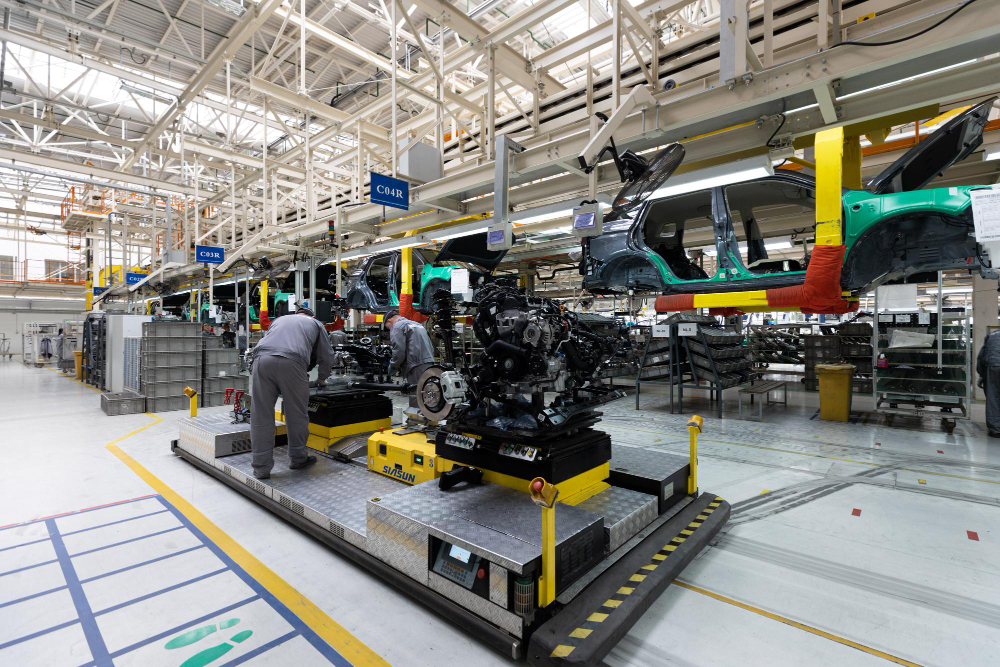Manufacturing in Asia: A Comprehensive Overview
Category: Chinese chance Date: 2024-09-30 Views: 2
1. Introduction to Manufacturing in Asia: A Global Perspective Asia's role in the global manufacturing sector is monumental, and its impact resonates across the international economic landscape. Notably, China, India, and Vietnam, among others, have emerged as pivotal players, collectively shaping the contours of global production capacities and supply chain dynamics. The region's ascent to manufacturing prominence is underpinned by several transformative trends, including technological advancements, shifting trade policies, and evolving economic strategies that have positioned Asia at the forefront of the manufacturing domain.
2. The Benefits of Manufacturing in Asia The allure of manufacturing in Asia is driven by multiple factors. Primarily, the cost advantages are significant, with lower labor, material, and production costs compared to many Western counterparts. Asia also offers abundant access to raw materials and resources, facilitating efficient production lines. Moreover, the scalability of production capabilities in Asia is unparalleled, supported by advanced infrastructure and expansive logistics networks. These elements collectively make Asia a compelling hub for manufacturers seeking to optimize costs and expand operations.

3. Key Manufacturing Hubs in Asia China, often dubbed the "World’s Factory," dominates with its vast and varied manufacturing sectors, ranging from electronics to automotive. The country’s extensive industrial base is complemented by a robust export framework, making it a global leader in manufacturing. India is rapidly emerging as a powerhouse in both technology and textiles, leveraging its skilled workforce and growing tech ecosystem. Vietnam has made significant strides, particularly in the electronics and garments sectors, capitalizing on its strategic geographic location and favorable trade agreements. Other nations like Thailand, Indonesia, and the Philippines also contribute significantly to the regional manufacturing landscape, each offering unique advantages and specializing in different sectors.
4. Challenges Faced in Asian Manufacturing Despite its strengths, manufacturing in Asia is not devoid of challenges. Issues related to labor laws and ethical practices continue to draw international scrutiny. Supply chain disruptions and political risks are ever-present threats that require robust mitigation strategies. Environmental concerns also loom large, with sustainable practices becoming increasingly crucial. Additionally, maintaining quality and complying with international standards are critical for sustaining global competitiveness.
5. Innovations Shaping the Future of Manufacturing in Asia Technological innovations such as automation, artificial intelligence (AI), and the Internet of Things (IoT) are revolutionizing Asian manufacturing. These technologies enhance efficiency, reduce costs, and improve product quality. The drive towards sustainability is also prominent, with an increasing number of firms adopting greener practices to reduce environmental footprints. Consumer trends towards customization and rapid delivery are further shaping manufacturing processes, making flexibility and innovation key components of successful Asian manufacturing strategies.
6. How to Navigate Your Manufacturing Strategy in Asia For businesses looking to tap into Asian manufacturing, strategic planning is essential. Conducting thorough research and due diligence can uncover valuable insights into market conditions and supplier capabilities. Establishing strong relationships and effective communication channels with local suppliers is crucial. Moreover, navigating the complex web of local laws and regulatory frameworks is fundamental to ensuring operational compliance and avoiding legal pitfalls.
7. Conclusion: The Future of Manufacturing in Asia The future of manufacturing in Asia holds immense potential amidst evolving challenges. The region's ability to adapt to the rapid changes in technology, market demand, and global economic climates will be key to its sustained growth and dominance in the manufacturing sector. Businesses and investors are encouraged to consider strategic partnerships and innovative approaches to leverage the opportunities presented by Asia's dynamic manufacturing landscape, ensuring resilience and success in the face of global economic fluctuations.

